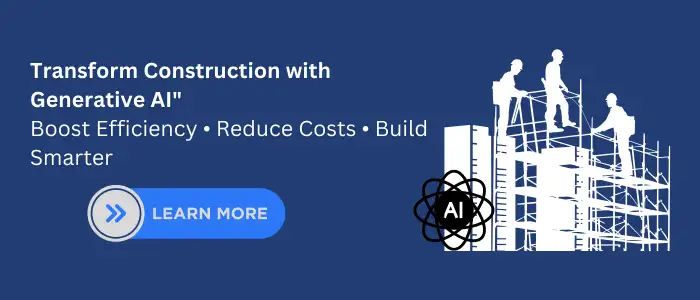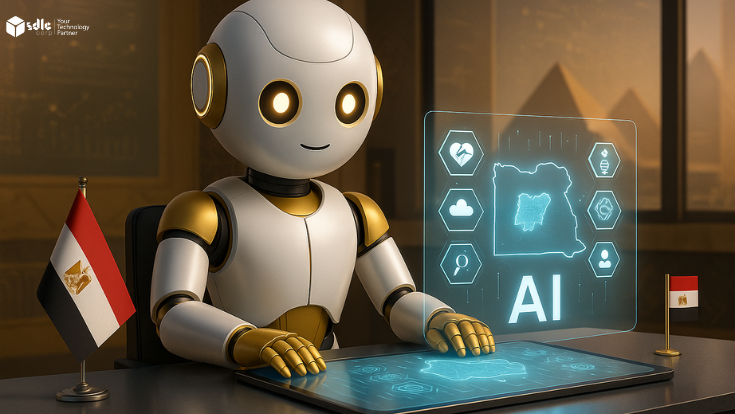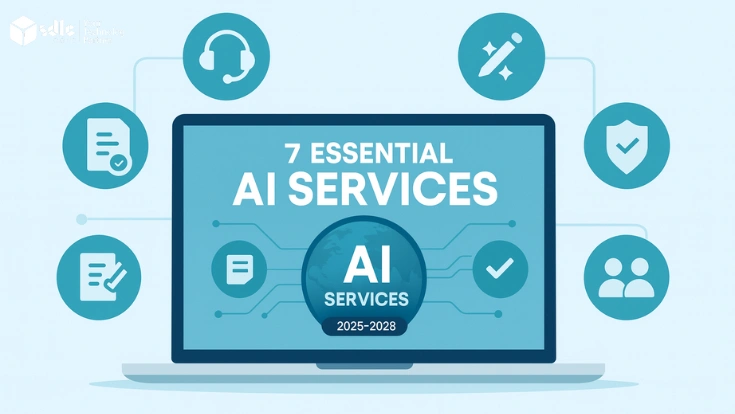Introduction
Firstly, the construction industry is evolving at an incredible pace. Traditionally, building projects depended on manual processes and outdated methods. However, new construction technology is now reshaping how designs are created, how resources are managed, and how projects are delivered. Moreover, generative AI in construction is driving this transformation by producing smarter designs, faster project schedules, and safer worksites.
As a result, companies can save money, reduce risks, and build more sustainable infrastructure. Consequently, the use of AI in the construction industry is no longer optional it is becoming essential for success. Finally, this blog will explore what generative AI is, why it matters, how it is applied across different phases of construction, its benefits, challenges, and the exciting future ahead.
1.What is Generative AI?
Firstly, generative AI is a type of artificial intelligence that goes beyond analyzing existing data. Secondly, it can generate new solutions such as building layouts, schedules, and simulations. Moreover, it uses advanced algorithms, including deep learning and machine learning, to process massive amounts of data. Consequently, it produces results that would take humans weeks or months to achieve.
Role of Generative AI in Construction Projects:
Construction projects generate large amounts of data across design, planning, procurement, and site operations. Generative AI can support these workflows by summarising project documentation, drafting reports, and assisting with communication between teams.
Many organisations explore Generative AI development services to build models that work with construction data while accounting for changing site conditions and timelines.

In fact, generative AI in construction enables professionals to explore thousands of design variations instantly. For example, architects can compare floor plans optimized for natural light, cost efficiency, and sustainability. As a result, they can choose the best option faster and with greater accuracy.
2.Why the Construction Industry Needs Generative AI
Firstly, the construction industry has long struggled with inefficiencies. Secondly, projects are often delayed, budgets frequently overrun, and safety risks remain high. Moreover, sustainability is now a global priority, making it critical to reduce waste and lower carbon emissions.
Because of these ongoing challenges, digital construction tools are no longer a luxury they are a necessity. Therefore, generative AI provides solutions by automating design, predicting risks, and optimizing resources. Consequently, firms that adopt AI-driven design gain a competitive advantage.
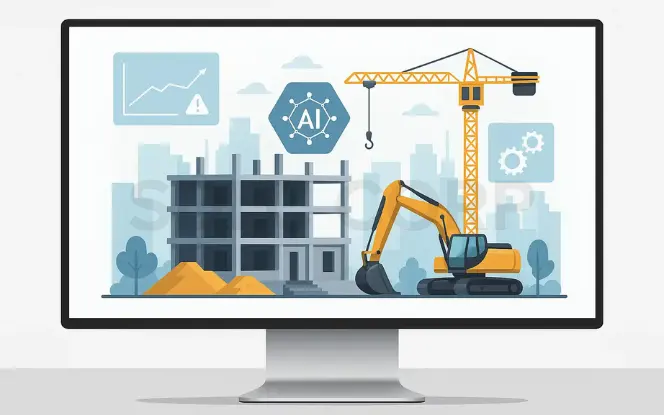
Additionally, client demands are increasing for unique, sustainable, and cost-effective projects. As a result, generative AI ensures companies can deliver tailored results at scale. Finally, the adoption of AI in the construction industry is helping companies meet modern expectations while preparing for future challenges.
3.Applications of Generative AI in Construction
Generative AI is reshaping the construction industry by introducing smarter, faster, and more efficient ways to design, plan, and manage projects. From creating optimized building layouts to predicting risks and improving sustainability, AI-driven applications are transforming every stage of construction.
3.1 Architectural Design and Planning

Firstly, generative AI gives architects the ability to create multiple building designs in minutes. Secondly, these designs balance cost, space, and sustainability requirements. Moreover, AI-driven design platforms like Autodesk’s generative design make it possible to compare thousands of layouts. As a result, architects can deliver customized options that satisfy both client needs and regulatory standards.
Additionally, generative AI ensures compliance with local building codes while still supporting innovation. Consequently, architects can spend more time refining ideas rather than doing repetitive tasks. Finally, design becomes faster, more creative, and more sustainable.
3.2 Structural Engineering

Firstly, engineers rely on generative AI to test how buildings respond to loads, stresses, and environmental conditions. Secondly, AI reduces repetitive calculations by generating optimized structural designs. Moreover, companies like Skanska use AI to cut steel consumption while maintaining safety. Consequently, costs decrease, and environmental impact improves.
Furthermore, AI explores alternative materials. For example, it may recommend lighter yet stronger composites. As a result, projects use fewer resources while enhancing durability. Finally, structural engineering becomes smarter, faster, and more sustainable.
3.3 Project Scheduling and Management

Firstly, scheduling is one of the most common sources of delay in construction. Secondly, generative AI predicts conflicts before they occur by analyzing labor availability, equipment use, and weather conditions. Moreover, schedules update in real time when circumstances change. As a result, downtime is reduced, and efficiency improves.
Additionally, AI can automatically reassign resources to avoid bottlenecks. Consequently, managers maintain realistic timelines and keep stakeholders informed. ERP platforms such as Odoo for Construction further enhance this process by centralizing scheduling, resource allocation, and project tracking. Finally, projects run more smoothly and finish on schedule.
3.4 Cost Estimation and Budgeting
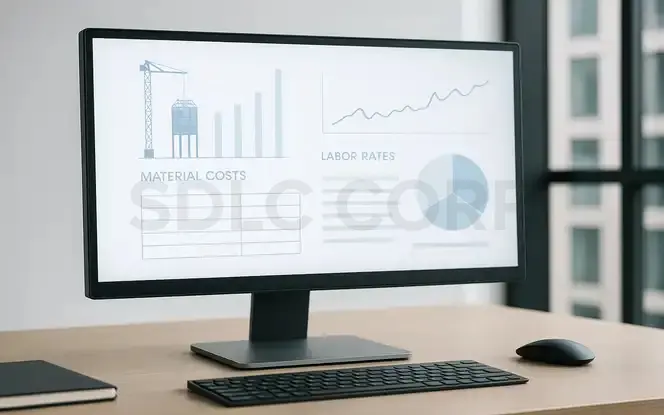
Firstly, cost overruns are one of the biggest problems in construction. Secondly, generative AI analyzes material prices, labor rates, and transportation costs to create accurate budgets. Moreover, it suggests cost-saving alternatives without lowering quality. Consequently, projects remain within budget, and client trust improves.
Additionally, AI can track fluctuations in material markets. As a result, companies can forecast price changes and negotiate contracts more effectively. Finally, financial risks decrease, and profitability increases.
3.5 Sustainable Construction
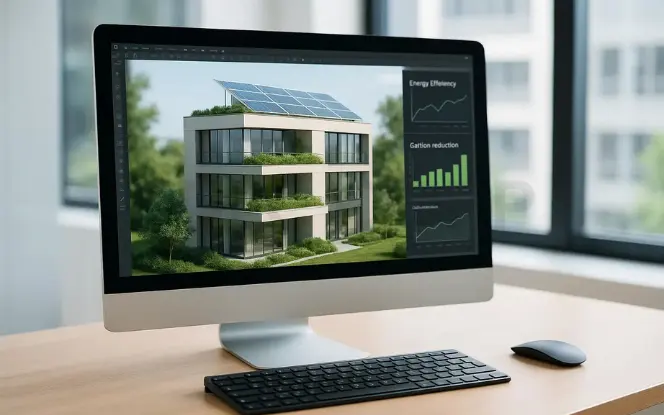
Firstly, sustainability is a key priority for the modern construction industry. Secondly, generative AI helps by choosing eco-friendly materials and minimizing waste. Moreover, it predicts a building’s energy performance before it is built. As a result, firms can design structures that consume less energy and reduce carbon emissions.
Additionally, AI can design buildings with natural ventilation and optimized lighting. Consequently, clients save money on energy bills while reducing their environmental impact. Finally, generative AI makes sustainable construction achievable and profitable.
3.6 Safety and Risk Management
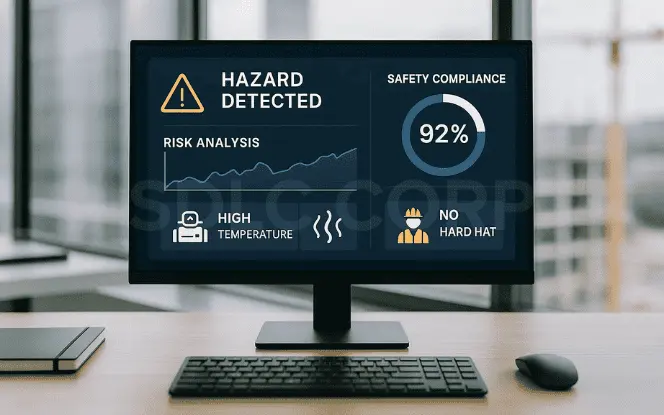
Firstly, safety is a top concern on construction sites. Secondly, generative AI analyzes past accidents, sensor data, and real-time video to predict risks. Moreover, it alerts managers about hazards before accidents occur. As a result, sites become safer, and lives are protected.
Furthermore, AI enforces compliance by checking whether workers wear proper gear. Consequently, violations decrease, and companies avoid penalties. Finally, safety management shifts from being reactive to proactive.
3.7 Smart Cities and Urban Planning
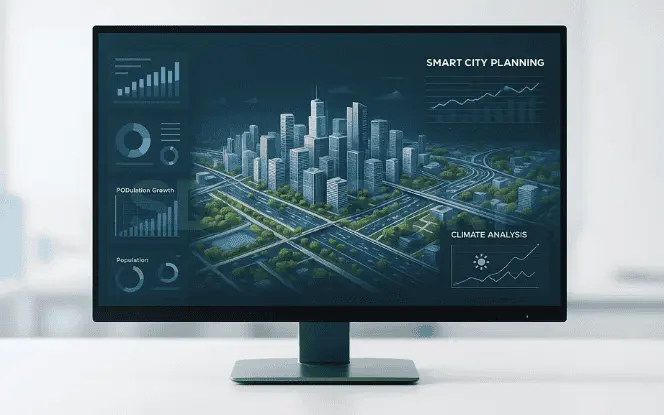
Firstly, generative AI is not limited to individual buildings. Secondly, it can design road networks, optimize public transportation, and plan green spaces for entire cities. Moreover, countries like Singapore already use AI-driven models for smart city planning. Consequently, urban areas become more efficient, sustainable, and livable.
Additionally, AI can simulate population growth and climate change impacts. As a result, cities can prepare for future challenges before they arise. Finally, generative AI ensures urban planning supports long-term growth.
4.Generative AI Across Construction Phases
Design coordination and documentation are central to construction delivery. Generative AI can help consolidate design notes, prepare planning summaries, and organise revisions across stakeholders.
In these scenarios, a Generative AI consulting company may assist in identifying appropriate use cases and setting review processes to ensure outputs remain accurate and traceable.
4.1 Design Phase
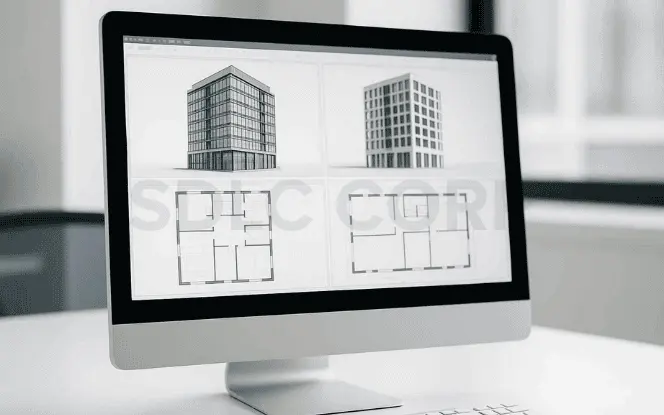
Firstly, AI generates creative layouts that balance functionality, aesthetics, and regulations. Secondly, architects can collaborate with engineers and clients using AI-generated 3D models. Moreover, conflicts are identified early. As a result, projects avoid expensive redesigns later.
4.2 Pre-Construction Phase

AI supports feasibility studies by analyzing soil, cost, and environmental data. Secondly, it evaluates scenarios with different materials and schedules. Moreover, it produces realistic simulations that improve stakeholder confidence. As a result, projects are better prepared before construction begins
4.3 Construction Phase

AI monitors sites in real time using drones and IoT sensors. Secondly, it predicts delays caused by weather or labor shortages. Moreover, AI-powered robotics perform repetitive tasks like bricklaying and welding. As a result, productivity rises, and errors decrease.
4.4 Post-Construction and Maintenance
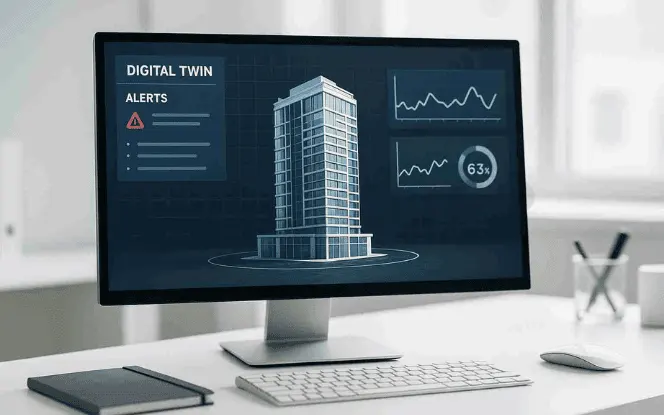
AI extends value through digital twins that track building performance. Secondly, it predicts equipment failures and suggests preventive maintenance. Moreover, this reduces emergency repairs and improves safety. As a result, buildings perform well throughout their lifecycle.
5.Real-World Case Studies
Van Wijnen – Housing Design
Firstly, Dutch construction firm Van Wijnen used Autodesk’s generative design tool to create housing layouts. Secondly, AI generated more than 15,000 options optimized for cost and sustainability. Moreover, projects were delivered faster. As a result, waste and costs decreased.
Skanska – Structural Optimization
Firstly, Skanska applied AI to structural engineering. Secondly, it reduced steel usage by 10%. Moreover, this lowered costs and carbon emissions. Consequently, the firm achieved safer, greener projects.
6.Integration with BIM, IoT, and Robotics
Generative AI tools are often integrated with project management platforms, BIM systems, and analytics tools. Reliable integration requires clear data flows and stable infrastructure. Construction firms may rely on AI development services to connect generative models with existing systems while maintaining consistency and operational reliability.

Building Information Modeling (BIM) creates digital representations of projects. Secondly, generative AI enhances BIM by producing multiple models and comparing outcomes. Moreover, it identifies design conflicts early. As a result, rework is minimized.
Additionally, IoT sensors on equipment feed real-time data into AI. Consequently, AI predicts failures and improves maintenance. Finally, robotics connected to AI follow blueprints with precision, automating repetitive tasks.
7.Extended Benefits of Generative AI
Decision-making becomes faster with AI-generated insights. Secondly, productivity increases as teams focus on creative and strategic tasks. Moreover, AI improves transparency, helping clients make informed choices. As a result, client trust grows.
Additionally, studies suggest AI could boost construction productivity by up to 60%. Consequently, companies that adopt it gain higher ROI. Finally, long-term value is secured as AI supports predictive maintenance and sustainable practices.
8.Challenges of Generative AI

Firstly, adopting AI requires investment in software and training. Secondly, firms often lack the clean data needed for accurate results. Moreover, some professionals resist relying on AI. As a result, adoption can be slow.
Additionally, regulations and ethical concerns about job loss create barriers. Consequently, successful adoption requires industry collaboration and education.
9.Future of Generative AI in Construction
The future will see AI integrated with robotics for automated tasks. Secondly, digital twins will become standard, improving monitoring and maintenance. Moreover, BIM will merge with AI to create digital ecosystems. As a result, projects will be smarter and more sustainable.
Additionally, AI will play a central role in smart city development. Consequently, global collaboration will expand as architects and engineers share AI-driven designs. Finally, the future of construction will be fully digital, automated, and sustainable.
10. Ongoing Development and System Maintenance
Construction projects and methods evolve over time, requiring AI systems to adapt accordingly. Generative models may need updates as project scope, regulations, or tools change. Some organisations choose to hire generative AI developers to maintain models, refine integrations, and ensure systems continue to align with construction workflows.
Conclusion
Generative AI in construction is no longer an experimental concept it is a proven technology that is actively transforming the industry. Secondly, it enhances design creativity, reduces costs, and improves safety standards. Moreover, it introduces sustainable practices that align with global environmental goals.
Additionally, the integration of AI with tools such as BIM, IoT, and robotics is shaping a future where construction projects are fully digital, automated, and highly efficient. As a result, firms that adopt AI-driven design and digital construction tools today will be better prepared to lead tomorrow’s market.
Furthermore, generative AI does not replace human expertise; instead, it augments creativity and decision-making. Consequently, professionals gain more freedom to innovate while routine and repetitive tasks are handled by intelligent systems. Finally, as the demand for smarter cities and sustainable infrastructure grows, generative AI will become the backbone of modern construction.
FAQ'S
What is generative AI in construction?
Generative AI in construction is a form of artificial intelligence that creates new building designs, construction schedules, and project solutions. Unlike traditional tools that only analyze existing data, generative AI produces multiple options by processing variables such as cost, safety, sustainability, and client preferences. It helps architects, engineers, and project managers explore innovative ideas quickly, test feasibility, and choose the most efficient design before construction begins.
How does generative AI reduce costs?
Generative AI reduces costs by optimizing the use of materials, minimizing waste, and streamlining project schedules. It can suggest alternative suppliers, predict market price changes, and automate cost modeling to prevent budget overruns. By simulating different scenarios, AI helps managers choose the most cost-effective strategies without compromising on quality. Over time, firms that adopt AI see improved profitability and better return on investment.
Is it safe to use AI in construction?
Yes, generative AI enhances safety in multiple ways. It analyzes data from sensors, cameras, and historical incidents to predict risks before they occur. AI also monitors compliance, ensuring workers wear protective equipment and follow safety guidelines. In addition, AI-powered predictive analytics help prevent equipment failures, reducing workplace hazards. As a result, worksites become safer, and companies reduce both accidents and liability costs.
Will AI replace human jobs?
No, AI is not designed to replace human expertise in construction. Instead, it automates repetitive and labor-intensive tasks such as scheduling, cost estimation, or blueprint adjustments. This allows professionals to focus on creative design, strategic planning, and project leadership. In fact, the adoption of generative AI is creating new job roles in AI management, robotics integration, and digital construction tools, ensuring that the workforce evolves rather than disappears.
How does it help sustainability?
Generative AI supports sustainable construction by selecting eco-friendly materials, predicting long-term energy performance, and reducing material waste. It designs buildings that use natural light and ventilation efficiently, lowering energy consumption. Additionally, AI can simulate the environmental impact of different construction methods, helping companies choose greener approaches. Over time, this leads to lower carbon footprints, compliance with global green standards, and cost savings for both builders and clients.


